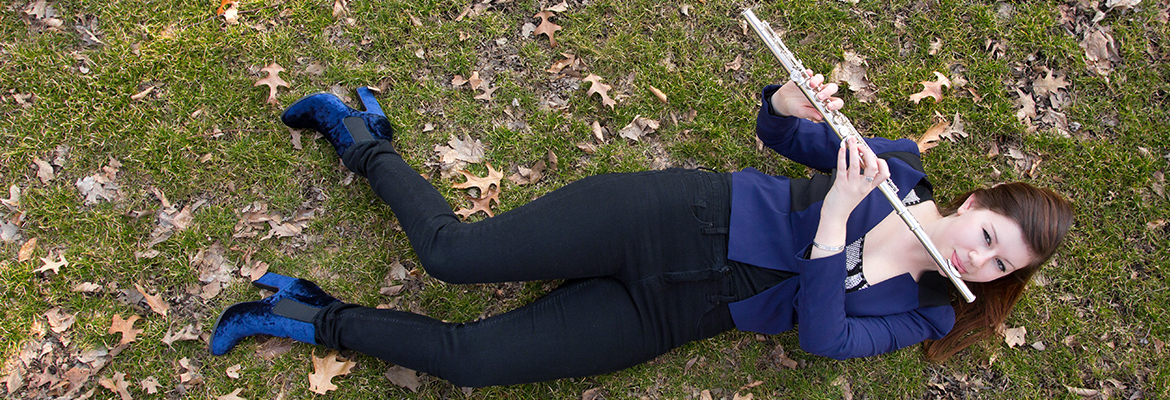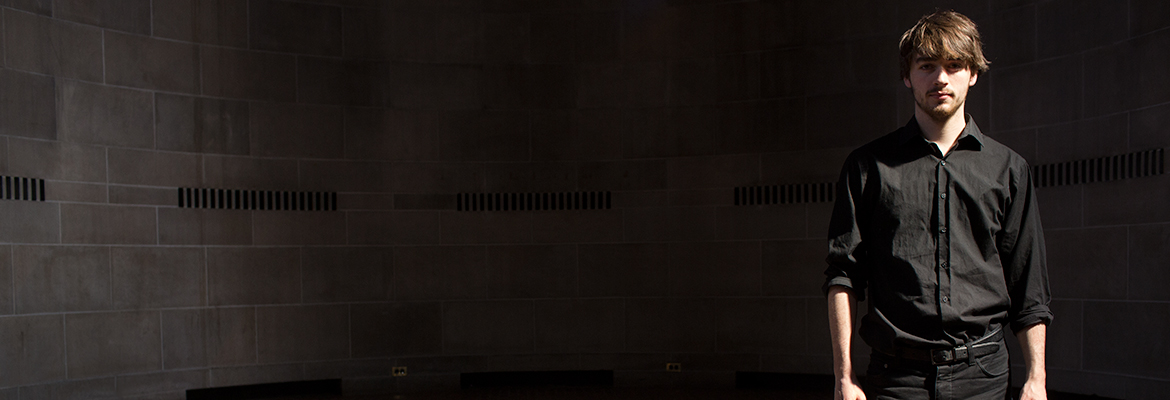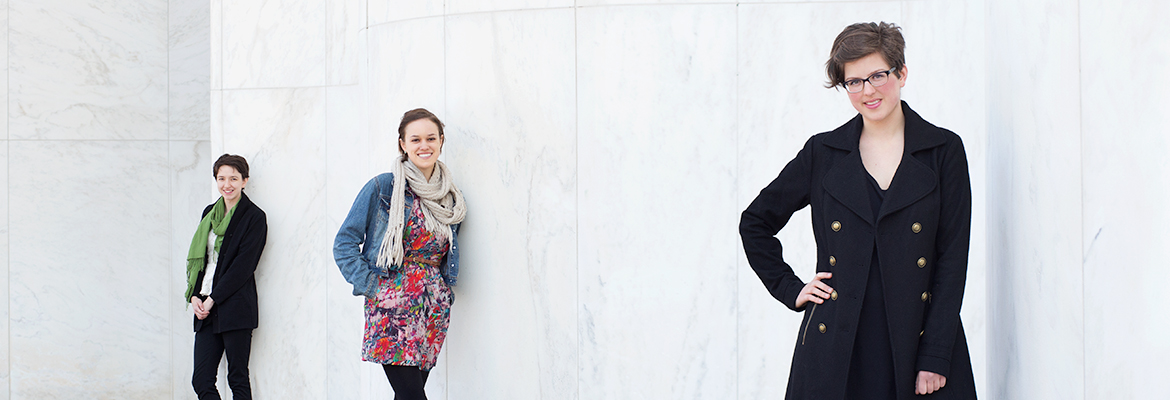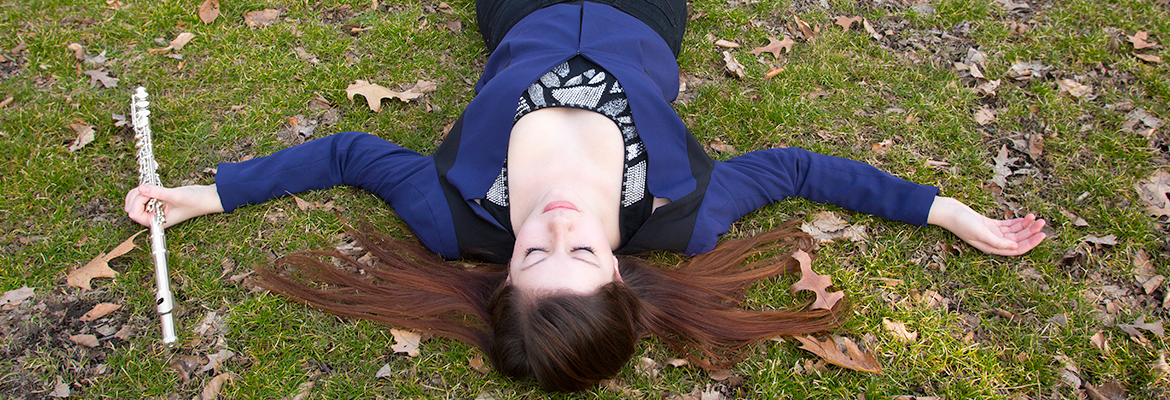From Hamar to Helsinki

Creativity and Leadership grants sprout imaginative winter-term projects
by Logan Buckley '14
Photographs by Tanya Rosen-Jones '97
Five Oberlin Conservatory students devoted their 2013 winter term to visiting destinations across Europe, where they worked with early music manuscripts, toured as a string trio, and even explored the discipline of “body mapping.”Each trip was made possible through Conservatory Initiative Grants supporting imagination and excellence (CiGsie), which are offered through Oberlin’s Creativity & Leadership project. CiGsie grants provide support for students seeking entrepreneurial experiences and aid in developing their professional skills. Every november, a panel of Conservatory division directors awards $12,000, with grants of up to $4,000 offered to each student selected from a competitive field.
Winning proposals stand out for their quality and imagination—or what Acting Dean Andrea Kalyn refers to as “their articulation of the creative edge.” This year’s winners were Crispin Swank, a junior who studied early music manuscripts in England; a new music trio called Chartreuse, which performed for 10 days throughout Norway; and second-year flutist Caroline Little, who studied body mapping—anatomy as it relates to movement—in Finland.
Oberlin’s Creativity & Leadership Project was founded to foster entrepreneurship across campus and is funded in part by the Burton D. Morgan Foundation and the Ewing Marion Kauffman Foundation. In addition to expanding the academic curriculum, Creativity & Leadership helps students develop practical ways to apply what they’ve learned in school. For conservatory students, that means honing skills that working musicians need: everything from connecting with other musicians and booking performances to designing concert programs.
These experiences help students join the ranks of Oberlin musicians who are already forging innovative careers out of their visionary ideas, says Kalyn, who cites success stories such as Apollo’s Fire and the International Contemporary Ensemble (ICE).
Though CIGSIE grants are awarded for winter-term projects, the program continues after participating students return to campus. In February, Chartreuse played its Norwegian program in Warner Concert Hall, and in May, Dwank directed a campus performance of early music transcriptions that stem from his work in England.
This fall, Creativity & Leadership will emphasize skills in developing programs, designing concerts, and thinking entrepreneurially about musical ventures in advance of the 2014 winter term. Related events will feature a lineup of experts whose insights will help students gain skills needed to successfully deliver their concepts—an integral part of the musical process.
As Kalyn puts it: “We start with an idea. the culmination of that idea is connecting with an audience.”
Getting Medieval

Crispin Swank
Crispin Swank, a junior who studies classical guitar and politics, became interested in early music as a result of his experiences singing in Collegium Musicum under the direction of Professor Steven Plank. Swank joined the ensemble his first semester at Oberlin and has since founded his own early music choir, NeumeMusic.
During his winter term at the University of York, Swank worked with two professors of musicology to learn about the cultural contexts in which early music manuscripts were produced. He studied documents in the library of York Minster Cathedral, one of the largest Gothic-style cathedrals in Europe. In the process, he learned some of the sleuthing skills— handwriting analysis, paper study—necessary to glean key information.
In addition to analyzing the manuscripts themselves, Swank transcribed several pieces into modern notation—a necessary step to enable performance, since most singers cannot read the notations in which early manuscripts were written. But transcription is not merely a straightforward process of converting notation; it can be more akin to translating poetry, with the transcriber forced to make creative decisions that substantially affect the piece's final tone.
In preparing his transcriptions, Swank wanted to combine the intentions of a performance edition with a scholarly one—to help musicians be more informed scholars. The project heightened his awareness of the need to understand music’s historical context as a route to inform its performance. It’s a notion Swank compares to an actor studying Elizabethan language conventions in order to better perform a Shakespearean play.
“I understand the music on a more visceral level now,” he says.
Hello Tromsø!

Chartreuse
The string trio Chartreuse devoted winter term to touring Norway with a new music program that included the premiere of Migration Study by Oberlin Assistant Professor Peter Swendsen, with whom the three students worked closely in preparation.
For 10 days, senior violinist Myra Hinrichs, senior cellist Helen Newby, and junior violist Carrie Frey performed in a variety of settings from Oslo, to Hamar, to Tromsø—and they came away flattered by the response they received and impressed by the musical IQ of their audiences. (The Norwegian arts scene is rich in part due to government support for artists. It is possible, for example, to live in Norway as a composer without necessarily needing a teaching job or other means of support. Indeed, the career advice the trio received from many Norwegians was: “First, move to Norway.”)
Through their experience, Hinrichs, Newby, and Frey learned firsthand how to work with venues, arrange transportation and lodging, and coordinate schedules, among other tasks related to organizing a tour. They even recorded their Oslo performance. They hope to tour again someday, perhaps including a return trip to Norway.
A Different Body of Work

Caroline Little
Caroline Little had already taken every available course on “body mapping,” a discipline that involves applying an understanding of human anatomy to improve movement, which can be used to work out problems in technique and posture.
“It helps you connect to all humans through anatomy,” the second-year flutist says.
Determined to seek additional instruction elsewhere, she applied for a CIGSIE grant and earned the opportunity to study body mapping for two weeks in Finland. At the Sibelius Academy in Helsinki, she met Liisa Ruoho, a professor of flute renowned for her playing and for her body mapping instruction. While there, Little took multiple lessons each week and spent long hours practicing her technique, often in front of the bathroom mirror.
Body mapping has reinforced her plans to teach flute, and she is interested in pursuing body mapping certification after graduation.
“I’ve grown so much, musically and personally,” she says of her experience overseas.
Logan Buckley studies creative writing and politics at Oberlin. He is from Alexandria, Va., and enjoys reading, folk music, and working on vegetable farms.
